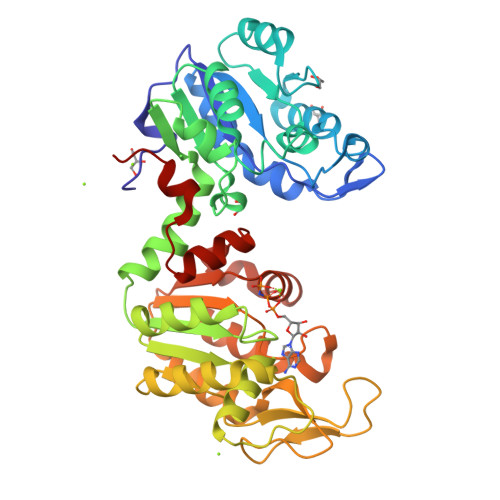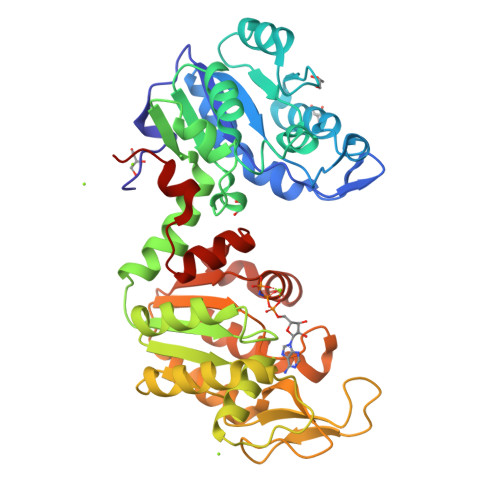Pneumococcal phosphoglycerate kinase interacts with plasminogen and its tissue activator.
Fulde, M., Bernardo-Garcia, N., Rohde, M., Nachtigall, N., Frank, R., Preissner, K.T., Klett, J., Morreale, A., Chhatwal, G.S., Hermoso, J.A., Bergmann, S.(2014) Thromb Haemost 111: 401-416
- PubMed: 24196407
- DOI: https://doi.org/10.1160/TH13-05-0421
- Primary Citation of Related Structures:
3ZLB - PubMed Abstract:
Streptococcus pneumoniae is not only a commensal of the nasopharyngeal epithelium, but may also cause life-threatening diseases. Immune-electron microscopy studies revealed that the bacterial glycolytic enzyme, phosphoglycerate kinase (PGK), is localised on the pneumococcal surface of both capsulated and non-capsulated strains and colocalises with plasminogen. Since pneumococci may concentrate host plasminogen (PLG) together with its activators on the bacterial cell surface to facilitate the formation of plasmin, the involvement of PGK in this process was studied. Specific binding of human or murine PLG to strain-independent PGK was documented, and surface plasmon resonance analyses indicated a high affinity interaction with the kringle domains 1-4 of PLG. Crystal structure determination of pneumococcal PGK together with peptide array analysis revealed localisation of PLG-binding site in the N-terminal region and provided structural motifs for the interaction with PLG. Based on structural analysis data, a potential interaction of PGK with tissue plasminogen activator (tPA) was proposed and experimentally confirmed by binding studies, plasmin activity assays and thrombus degradation analyses.
Organizational Affiliation:
Simone Bergmann, PhD, Technische Universität Braunschweig, Spielmannstrasse 7, 38106 Braunschweig, Germany, Tel.: +49 531 391 5818, Fax: +49 531 391 5854, E-mail: simone.bergmann@tu-bs.de.





















